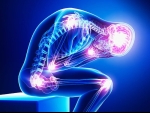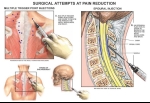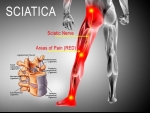Home »
Blog » Back Pain
| Stem Cell, PRP, Acupuncture in Queens & Long Island, New York
Back Pain | Stem Cell, PRP, Acupuncture in Queens & Long Island, New York
Tags: Back Pain | Posted on: 31-Mar-2021 | No of views: 6214 Abnormal Pain That Extends Beyond the Expected Period of Healing - Chronic pain is an enormous problem in the United States, costing millions in lost workdays and decreased efficiency. Chronic pain causes local or widespread pain that remains long after a person recovers from an illness or injury. Unlike short-term pain, chronic pain is abnormal and is considered a disease in itself. If you are one of 100 million Americans who suffer from chronic pain, a pain specialist can treat your pain and help you regain control over your life.
Read more
Tags: Back Pain | Posted on: 26-Mar-2021 | No of views: 6952 Pain in the upper and/or middle back can be quite limiting and interfere with daily activities. To help alleviate this pain, consider stretching and strengthening the muscles that support your thoracic spine (upper and mid-back). Here are 5 common exercises to try.
Press-Up Exercise - This press-up or back extension exercise targets your back extensor muscles, which are attached to the back of your spine.
Read more
Tags: Back Pain | Posted on: 24-Mar-2021 | No of views: 5660 Pain due to arthritis, trauma, or degeneration that affects the spine and surrounding tissues - The spine is a vital structure that supports the body while providing enough flexibility for movement. The spine is divided into the neck (cervical area), middle back (thoracic area), and lower back (lumbar area). Areas that sustain a lot of twisting and bending, such as the lower back, are most likely to get injured. It is estimated that 80% of the population will have lower back pain, or lumbago, in their lifetime.
Read more
Tags: Back Pain | Posted on: 22-Mar-2021 | No of views: 8310 The human body is amazingly complex and integrated in a way in which everything is somehow connected. And this fact can be made abundantly clear when a problem develops in one area and your nerves cause symptoms (in this case, pain) to radiate outward. When this happens, trigger point injections go straight to the source of your pain to bring you relief.
Read more
Tags: Back Pain | Posted on: 19-Mar-2021 | No of views: 7855 Your lower back is a superb feat of engineering it’s strong, weight-bearing, and sturdy, yet highly flexible with a range of motion in all directions. Understanding the anatomy of your lower spine can help you communicate more effectively with the medical professionals who treat your lower back pain. Here is a description of useful anatomical landmarks.
The Lordotic Curve - Your lower back (lumbar spine) is the anatomic region between your lowest rib and the upper part of the buttock.
Read more
Tags: Back Pain | Posted on: 17-Mar-2021 | No of views: 7183 Painful Spine Problem Can Be Effectively Treated Annular tears can cause fluid to leak out of vertebral discs of the spine, irritating nearby nerves, causing significant pain, numbness, and tingling in the back, neck, or legs. Annular tears are most often the result of normal wear and tear associated with the aging process. Since the tears may not fully heal, the risk of re-injury is high.
Read more
Tags: Back Pain | Posted on: 10-Mar-2021 | No of views: 6304 An appointment with your doctor to discuss your sciatica symptoms and treatment options can often feel like a race against time. With many consultations lasting 15 minutes or less, here are 6 insights and tips on how to make the most of your time with your doctor:
1. Write Down Your Symptom History to Save Time During the Appointment - Your doctor is going to ask you several questions about your symptom history, so writing it down in advance will save time during your appointment and ensure you don’t leave out any important information. When you have a well-maintained pain diary, you will likely provide more precise and complete information, and avoid missing important symptoms or factors that can be crucial in your diagnosis.
Read more
Tags: Back Pain | Posted on: 08-Mar-2021 | No of views: 5944 When you suffer from chronic back pain, finding a treatment that helps you get relief from your discomfort can be trying. In some cases, if conservative treatments fail to reduce your pain or help you regain some of your normal function, surgery may be recommended. But surgery isn’t always the best choice for chronic back pain, due to the long recovery period and the possibility that it may not resolve your pain; or worse, lead to other back problems.
Read more
Tags: Back Pain | Posted on: 05-Mar-2021 | No of views: 15827 A pulled muscle in your lower back can send intense flareups of pain, spasm, and stiffness, causing many people to end up in the emergency room. When this injury happens, it’s smart to know what you can do to immediately and effectively bring down the pain to a tolerable level while also helping your body heal. As a general guideline, rest during the initial day or two after your injury, moving slowly and gently to allow your muscle tissue to recover and begin the regeneration process. You may use a back brace intermittently for additional stability.
Read more
Tags: Back Pain | Posted on: 01-Mar-2021 | No of views: 5172 Long-term (chronic) back pain can greatly interfere with your life by making it difficult to perform even the simplest task. But successful relief from the pain is often elusive. Invasive surgery, pain medications, and other therapies can worsen the initial issue or bring on troubles of their own. Narcotic pain medications, for instance, can lead to dependence that endangers your social, emotional, and physical health.
Read more
Love this Post? Spread the World






















